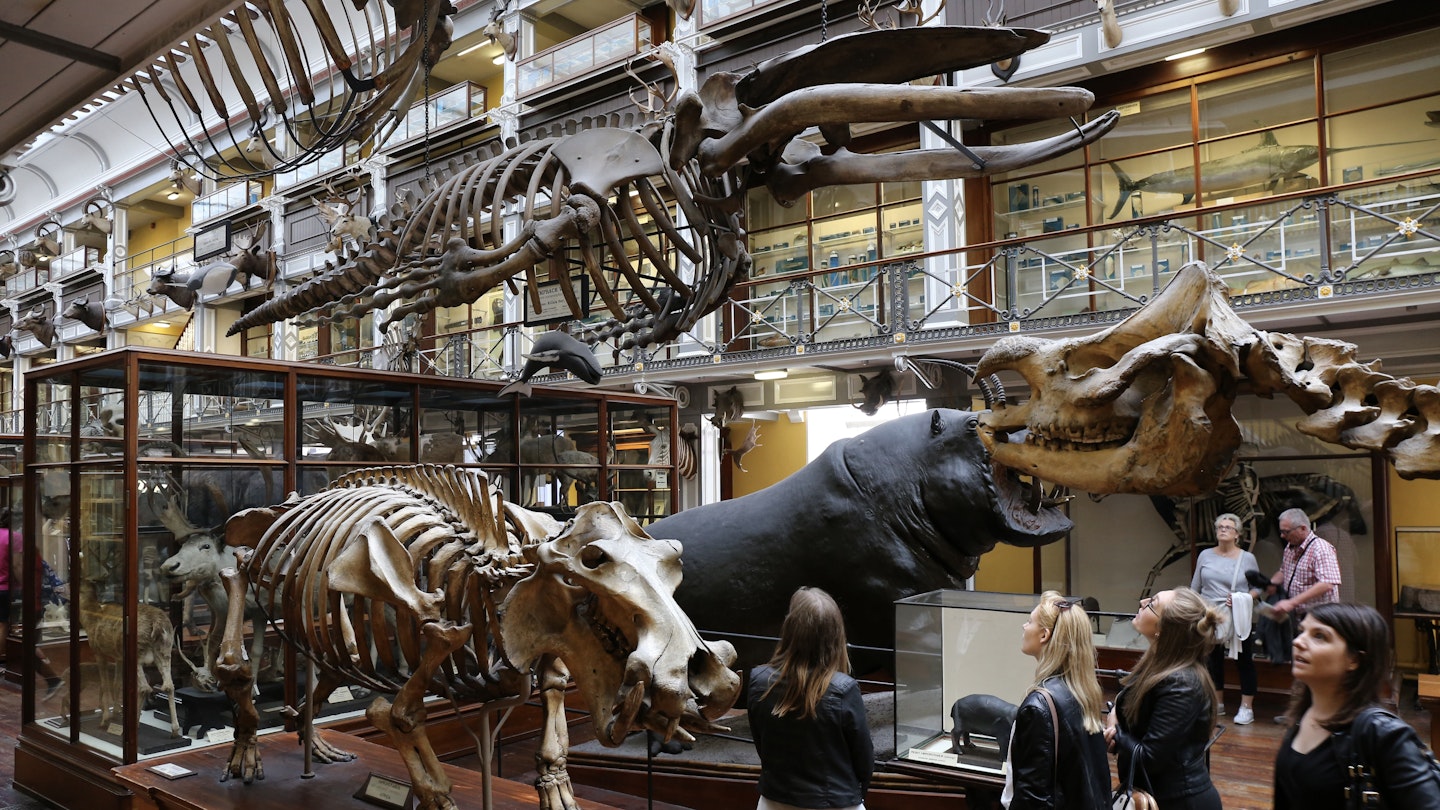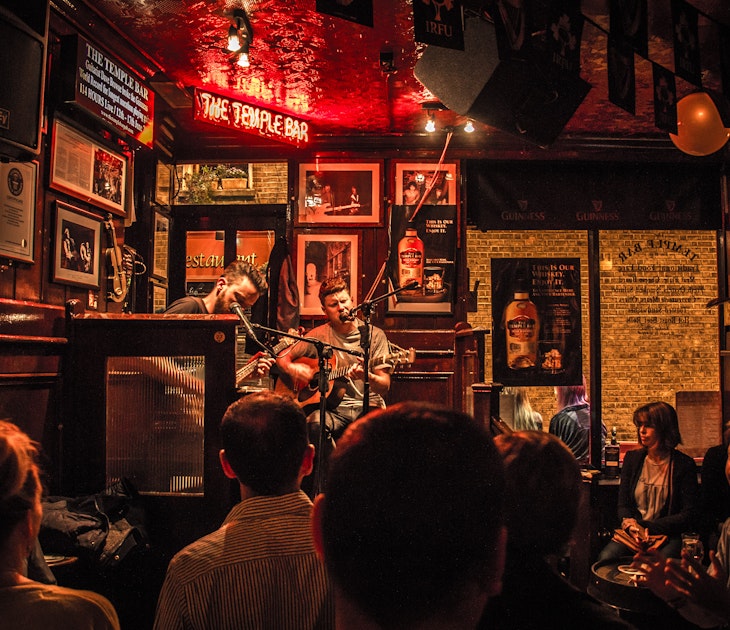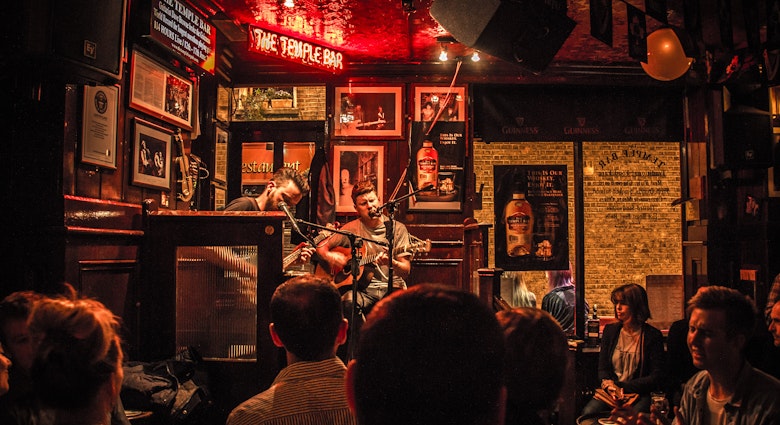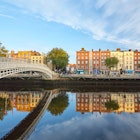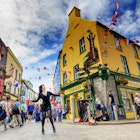Visitors to Dublin, one of Europe’s most expensive cities, can be in for some sticker shock. Yet the Irish capital offers up a surprising selection of free attractions that reveal its innate personality.
From acclaimed museums and art galleries to city beaches and street musicians, here’s how to tap into the city’s culture and charm – without spending a cent.
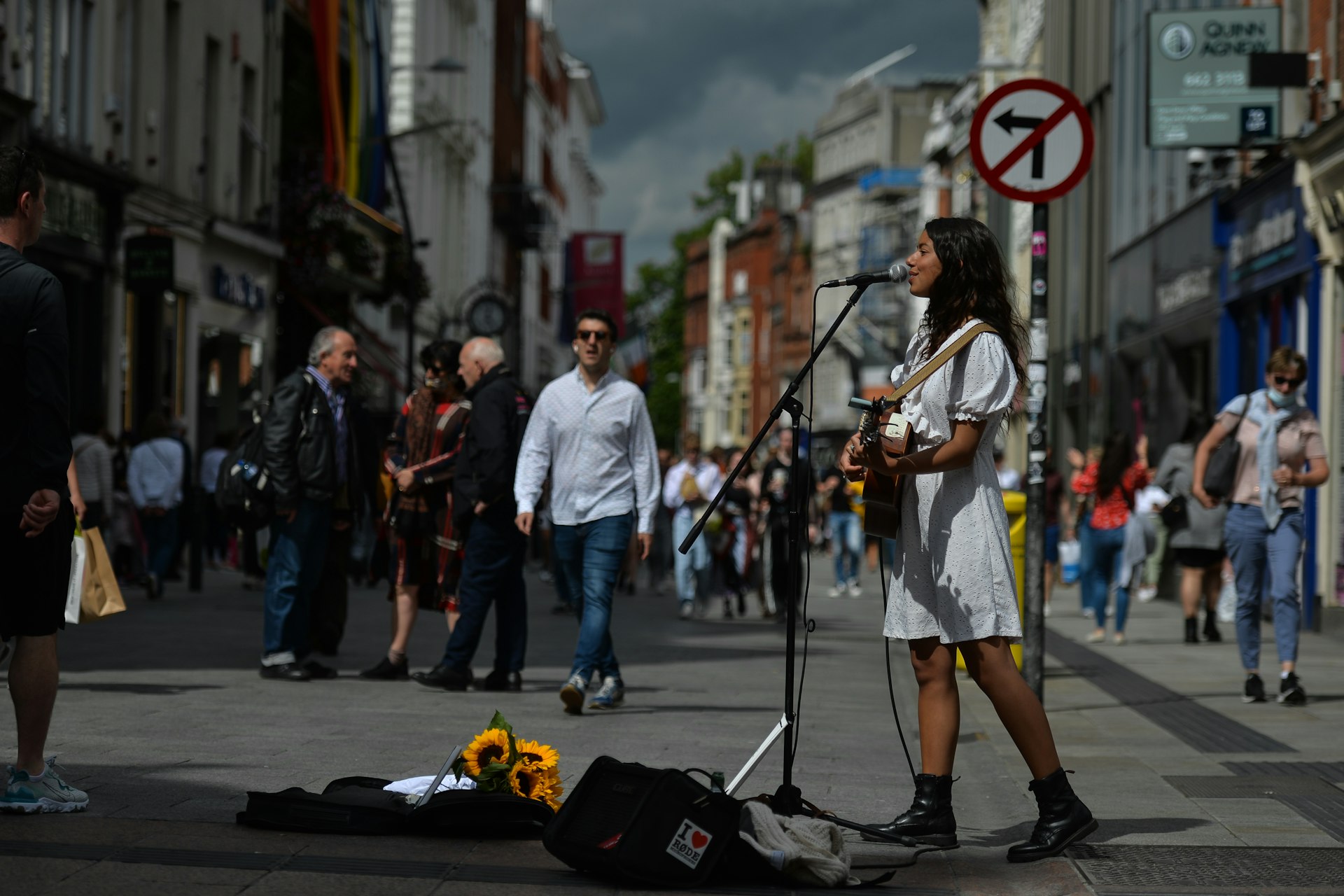
1. Go people-watching on Grafton St and St Stephen’s Green
You’re never far from music in Dublin, and the city’s buskers provide year-round entertainment along pedestrianized Grafton St. Catch a tune, then move along to the next entertainer as you soak up the vibes with the crowds. Then head to nearby St Stephen’s Green, the grandest Georgian park in Dublin and a fashionable spot since it first opened to the public in 1880. With 9 hectares (22 acres) of manicured lawns, colorful flower beds, a Victorian bandstand, pond and playground, it’s a calm space to grab a bench or hang out on the grass. Though there will be swans and sculptures, ducks and dogs, the highlight here is the people-watching.
2. Marvel at modern masterpieces at IMMA
Housed in the Royal Hospital Kilmainham, a magnificent 17th-century building modeled on Les Invalides in Paris, the Irish Museum of Modern Art (IMMA) has a setting worthy of the contemporary treasures held inside. Ramble the corridors and galleries discovering works by Louis le Brocquy, Lucien Freud and Mary Swanzy among installations, sculptures and moving images.
Planning tip: Don’t leave without exploring the grounds and formal gardens, where you’ll find more of the art collection and a mapped-out nature trail.
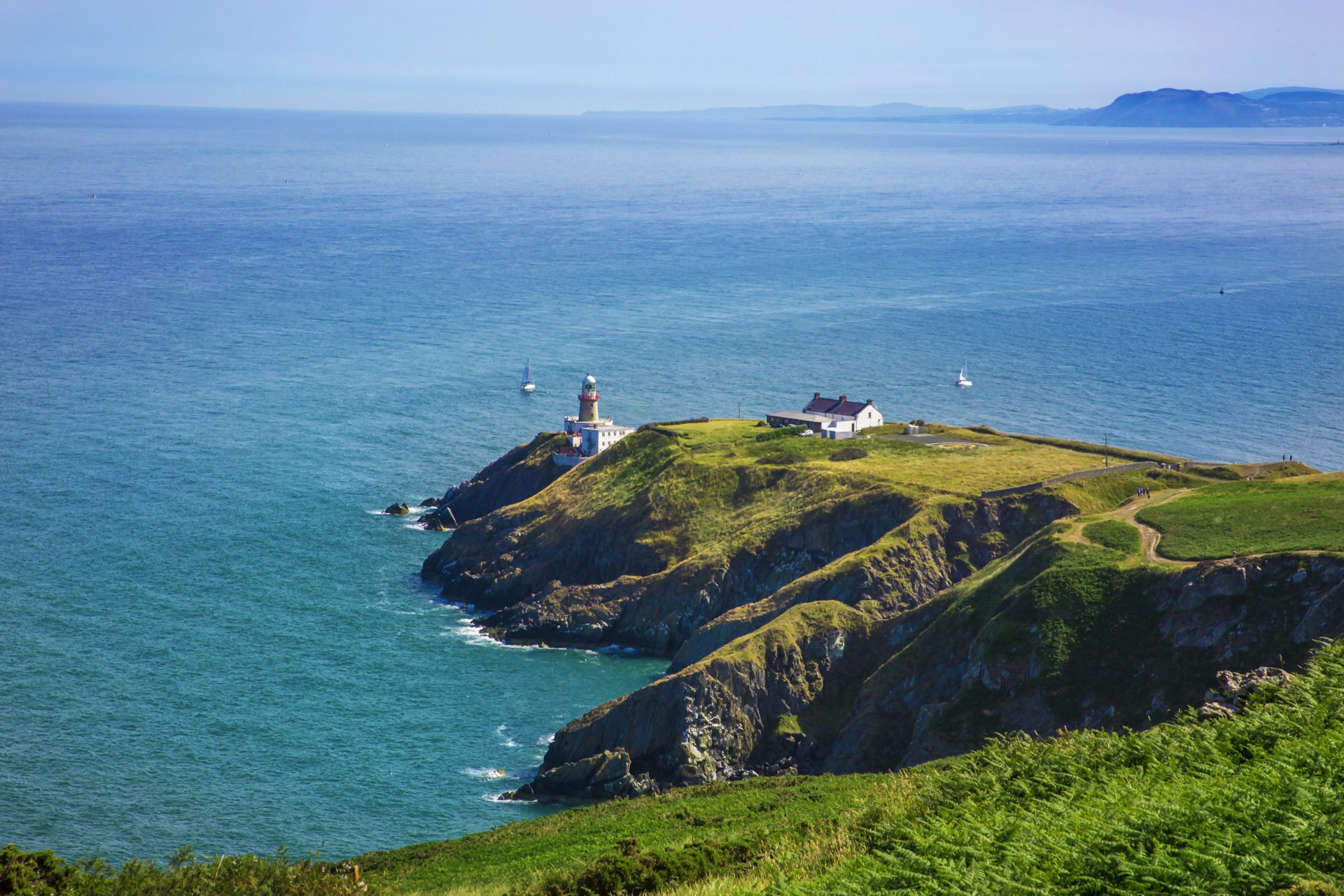
3. Take a day trip to Howth Head
The perfect day trip from the city center, Howth delivers a bit of country beauty within the city limits. The Cliff Walk passes beautiful private houses before rewarding walkers with spectacular views across Dublin Bay. There are four waymarked routes to follow, with the full loop achievable in 3 hours. Look out for seals and seabirds, the small islands of Ireland’s Eye and Lambay, and the Secret Beach (safest to admire from above). If the budget allows, don’t leave Howth without sampling fresh fish-and-chips on the seafront.
4. Wander the grounds of Dublin Castle
Built on the site first settled by Vikings in 841, Dublin Castle dates back to the 13th century, having served as a fortress, prison, treasury and seat of English rule for 700 years. While guided tours will cost you, visitors can explore the atmospheric grounds for free. Ponder history as you wander the cobbled squares, take in the castle’s striking exterior and sit in the intricate Dubh Linn Garden.
Planning tip: Don’t leave without visiting the Chester Beatty Library, a fascinating museum with an eclectic collection of rare and ancient manuscripts, artworks and artifacts, gathered by an erudite (and very well-traveled) American magnate and philanthropist.
Heading to Dublin? Lucky you. Let Lonely Planet help make your trip even better:
Explore Dublin’s best neighborhoods...
Get the most of our Dublin on a budget...
Discover Dublin’s coolest independent shops
5. Find all kinds of creatures at the “Dead Zoo”
After undergoing an extensive refurbishment, Dublin’s “Dead Zoo” (aka the Museum of Natural History) has partly reopened. Ireland’s oldest museum, the eclectic space on Merrion Street Upper exhibits examples of some 10,000 objects (out of a collection of 2 million) and includes meteorites, mammals, insects, birds and skeletons of some of the largest creatures known to humankind. Quirky and exotic, it’s always a big hit with the kids.
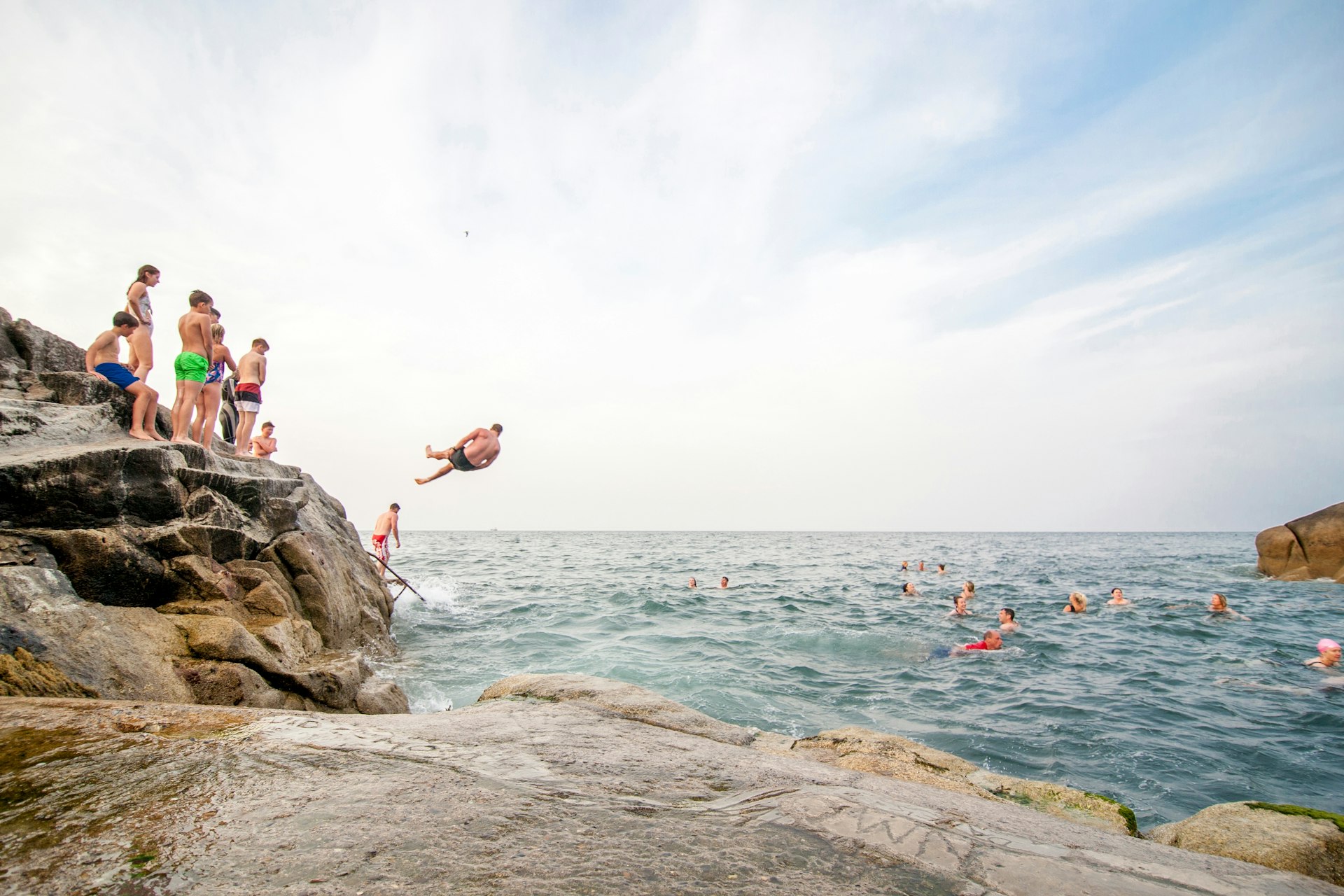
6. Stroll Dún Laoghaire’s East Pier and take a swim
A confection of Victorian and Georgian terraces overlooking a large harbor, the coastal suburb of Dún Laoghaire has drawn Dubliners for generations for leisurely strolls along its East Pier. In summer, continue to walk south along the shore to join the bathers on tiny Sandycove Beach, or head around the corner to the Forty Foot Pool, Ireland’s most famous swimming spot.
Planning tip: Swimming here is a popular year-round activity, so pack your swimsuit and join the group of hardy regulars who brave the waters all through winter.
7. Visit the restored diving bell that helped shape Dublin Port
In use from 1871 until the 1950s, the restored Diving Bell on Sir John Rogerson’s Quay is a Victorian feat of engineering that facilitated the below-water construction of Dublin's deep-water quays. Today, this unique chamber holds Dublin’s smallest museum, which reveals the grueling work and personal stories of brave divers who dredged the riverbed, deepening the capital’s port from within this very metal box.
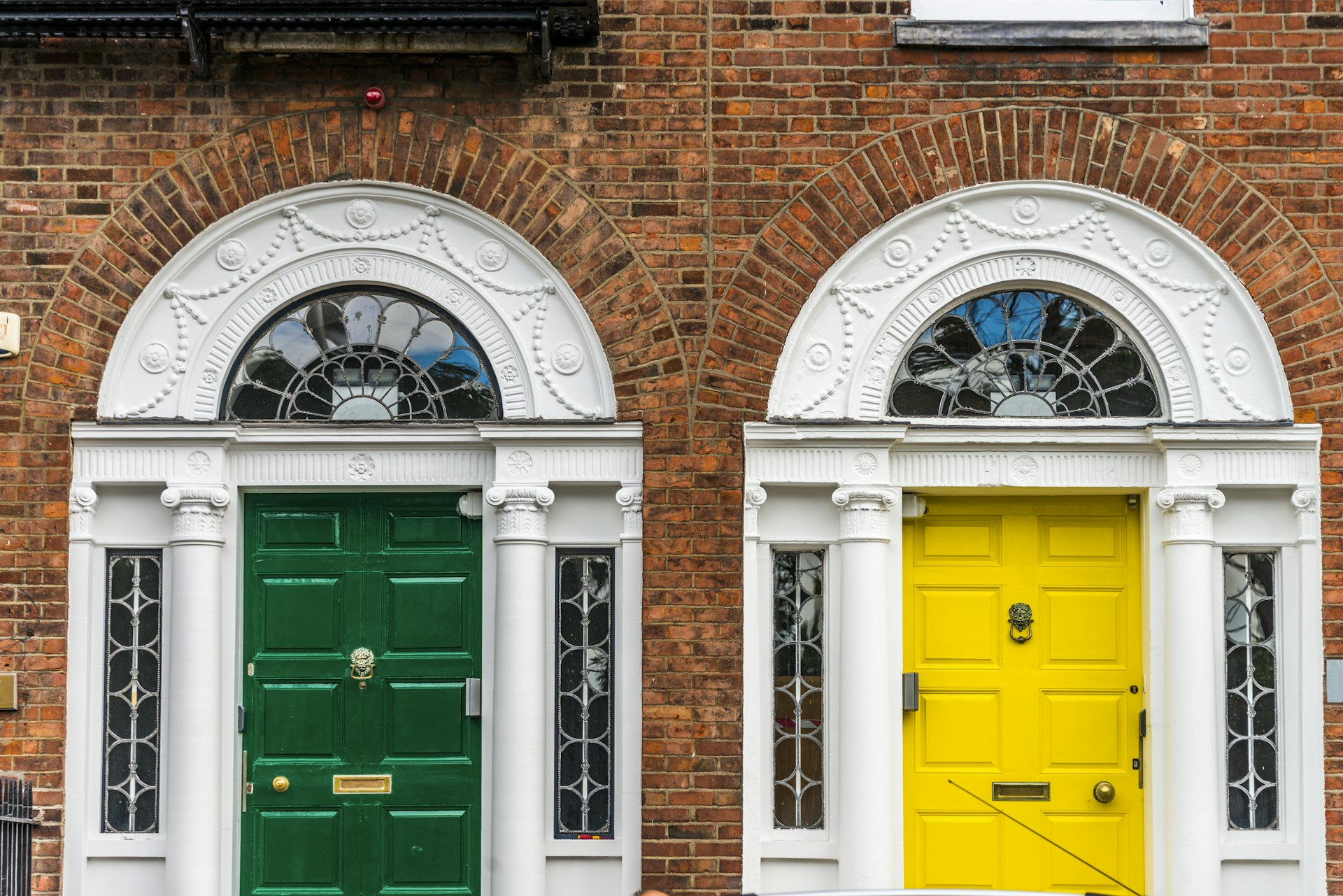
8. Take photos of Dublin’s famously colorful Georgian doors
Dublin was once the second-most important city in the British Empire – and the Georgian-era British left a legacy of gracious architecture that defines Dublin’s city center today. You don’t need to be an architecture buff to enjoy the 18th- and early-19th-century streetscapes and private garden squares, where politicians and the professional classes lived (and still live) in serious style. Today, colorful Georgian doors with ornate fanlights and gleaming brass are synonymous with the city, and make for a fun photography trail.
9. Admire modern art with a free concert
Built in the 1700s as a private townhouse, an imposing Georgian mansion on Parnell Sq North is home to the Hugh Lane Gallery and Ireland’s finest collection of contemporary art. Named for the celebrated art dealer and gallery director who founded it, this beautiful space houses works from Monet and Manet to Sean Scully and Harry Clarke’s kaleidoscopic stained glass.
Planning tip: Once a week on Sundays (except July and August) you can combine great art with great music thanks to free concerts from Irish and international performers in the Sculpture Gallery.

10. Tour the National Botanic Gardens of Ireland
Tropical plants, spectacular structures and frisky squirrels are some of the delights on offer at the National Botanic Gardens of Ireland. The Turner Curvilinear Range and Great Palm House are the country’s most famous greenhouses, with exotic orchids, cacti, bamboo and bananas under glass. Covering 50 acres in Glasnevin, the gardens are a haven of rare trees and fragrant flowers, including many endangered species.
Planning tip: There are free guided talks on Sundays and downloadable official audio guides.
11. Hunt for ancient treasures at the National Museum of Ireland – Archaeology
Prehistoric gold, Viking weapons, ancient ceramics and medieval shrines are some of the startling objects on display in the National Museum of Ireland – Archaeology. The museum combines interactive displays of these treasures with themed exhibitions.
Planning tip: Daily guided tours interpret the collection to transport you back in time, from the Stone Age to medieval Ireland.

12. Soak up the views in the Dublin Mountains
Encircling the city, the Dublin Mountains might only pass for hills in other parts of the world – but what they lack in height they more than make up for with scenery. Trails for every fitness level lace the mountains, with Carrickgollogan Forest Walk a good-entry level option. Popular with mountain bikers and families, the disused stone chimney of the lead mine, with its twisty staircase, is mesmerizing, while the viewing rock enables spectacular panoramas from south Dublin down to north Wicklow.
13. Go on a seaside nature walk along Dollymount Strand
Connected to the coast at both ends, long and skinny North Bull Island is a glorious nature reserve tucked into Dublin Bay. Come to jog or walk along the three-mile Dollymount Strand, spotting seals at the northern end and kite surfers at the southern one. Migratory species nest in the dunes, making it a popular spot for birders, while the chilly waters are populated year-round by swimmers. There are designated bathing areas, should you feel like joining them.

14. See masterpieces at the National Gallery
A great place to hide out on a rainy day, the National Gallery on Merrion Sq houses 2500 paintings, significant sculptures and thousands of artworks in watercolor, pencil and print. The permanent collection includes works by Vermeer and Van Gogh, Osborn and Orpen, and can be navigated with a free audio guide.
Planning tip: There’s a fun work space for children to get creative in, and free public tours on the weekends.
15. Find peace along Dublin’s waterways
Two tranquil waterways running through the city, the Grand Canal on the Southside and Royal Canal on the Northside, wend their way west toward the River Shannon. Built in the 18th century (and eventually made redundant by the railways), today they’re largely traffic-free routes with peaceful bankside pleasure paths that lure walkers, joggers and cyclists. Take a picnic, grab a bench, admire the wildlife en route – and leave the buzz of the city behind you.
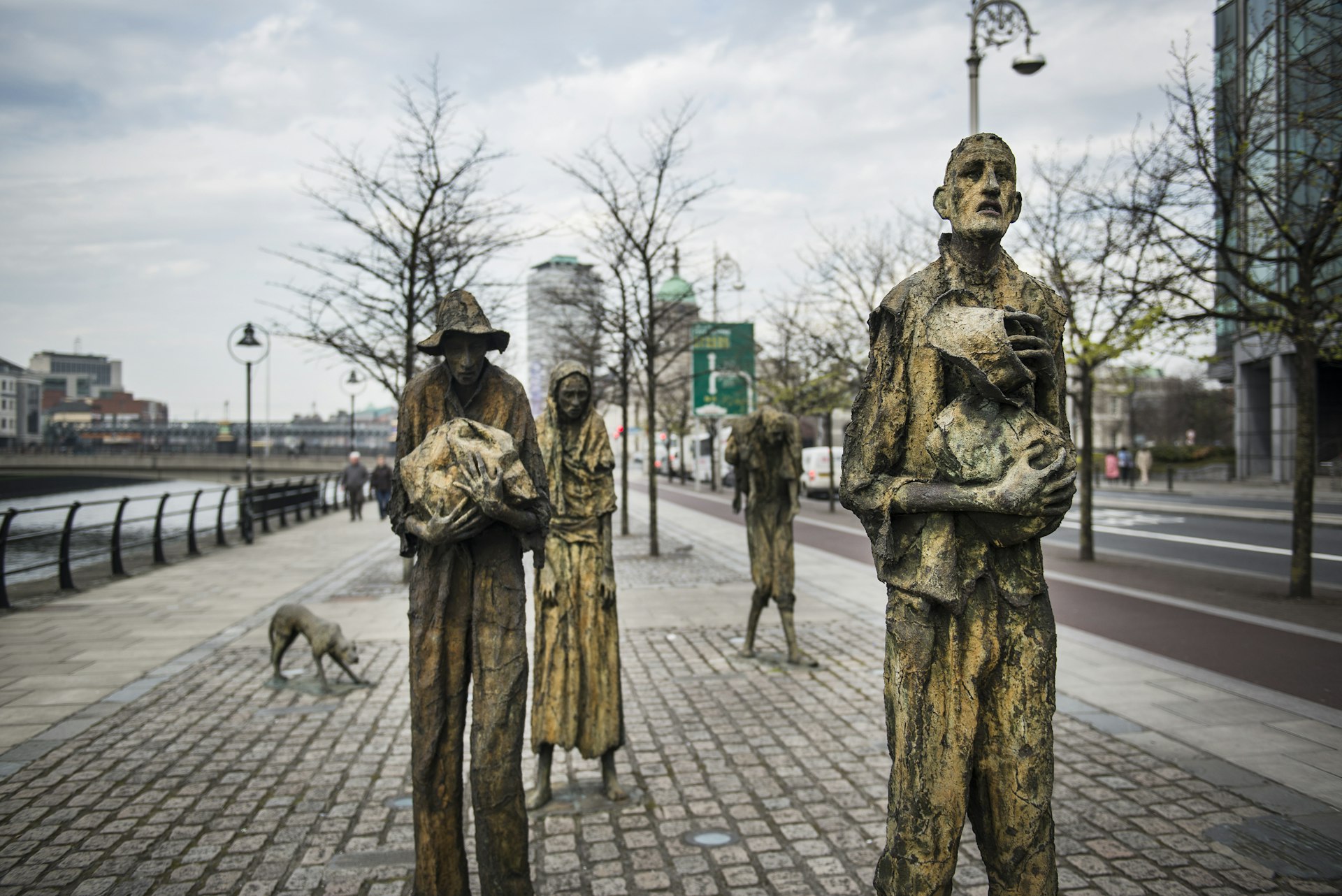
16. Look up to admire Dublin’s remarkable, historical and legendary residents
From statesmen and singers to patriots and poets, Dublin’s streets and squares are watched over by many of the city’s most notable citizens. Carved in stone and cast in bronze, they commemorate and celebrate the capital’s proud history and culture. Look up as you walk and meet the famous and fearless, from Molly Malone to Michael Collins, the Children of Lir to James Joyce. On Custom House Quay, one of the city’s most evocative monument, Famine, is a collection of forlorn bronze figures commemorating the millions of Irish forced to emigrate during the 19th-century Irish Famine.
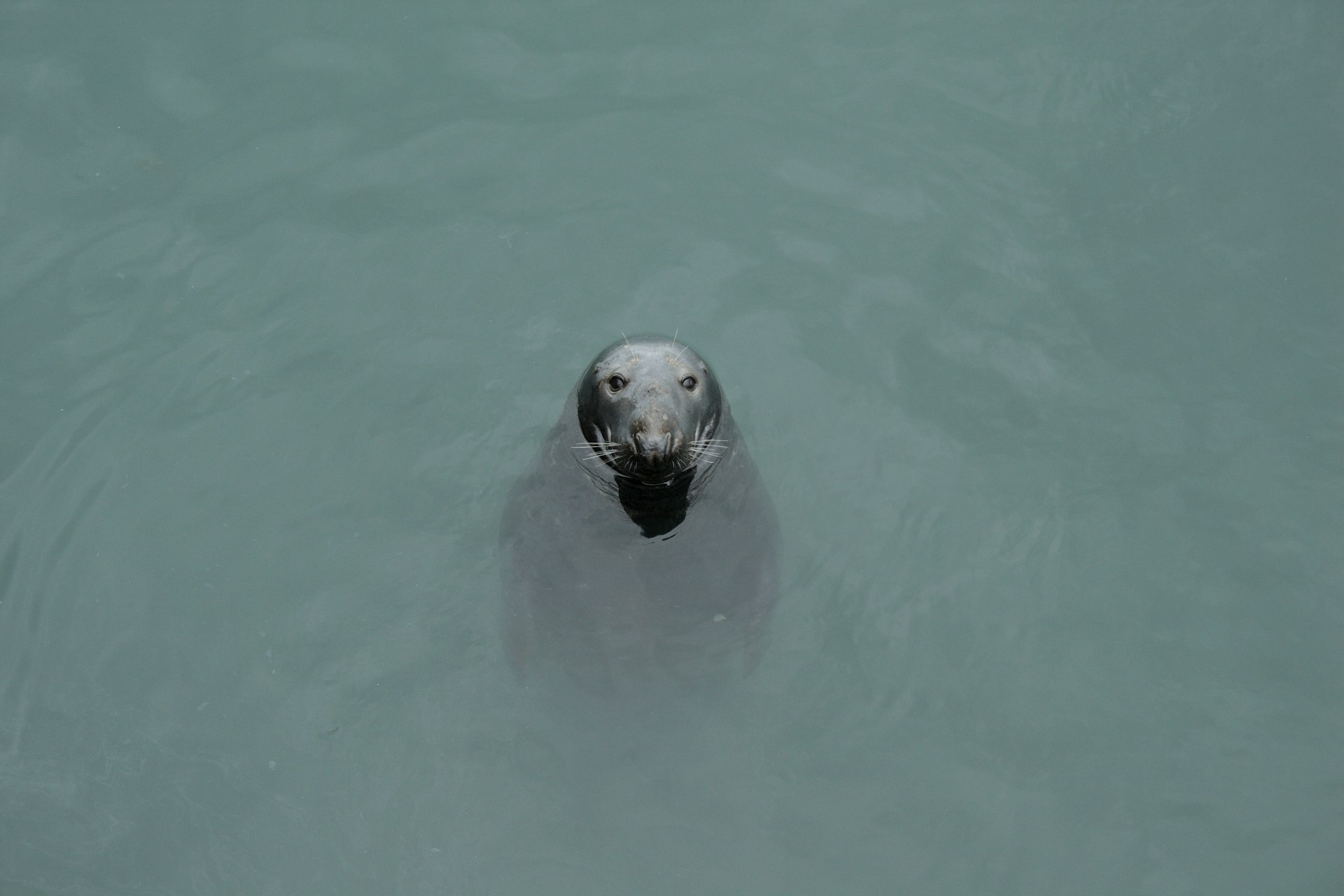
17. Wade out to Shenick Island
The pretty seaside town of Skerries in north Dublin is the starting point for a fun adventure on land and sea – one that’s especially great for kids. At low spring tide, don your wellies and walk across the mud flats to Shenick Island, where a lonesome Martello Tower, or defensive fort, stands sentinel over the wildlife reserve. The island might look deserted, but it’s a magnet for nesting gulls, cormorants and basking seals, with great views back to land.
Planning tip: You must check tidal times in advance, and return to the mainland within two hours of low tide.
18. Time your visit for the first Wednesday of the month for free access to top monuments
On the first Wednesday of every month, many Office of Public Works (OPW) Heritage Sites offer free admission to some of the country’s most popular attractions, like the neoclassical pleasure house of Casino Marino and Elizabethan Rathfarnham Castle. Farmleigh House, an Edwardian mansion in the Phoenix Park, was once home to the Guinness family and is always worth a trip. With opulent interiors, it’s used today as a guesthouse by the Irish state, and displays artworks, books and furnishings that once belonged to the original owners.
Planning tip: Free First Wednesday tickets are allocated on a first come, first served basis and cannot be booked in advance.
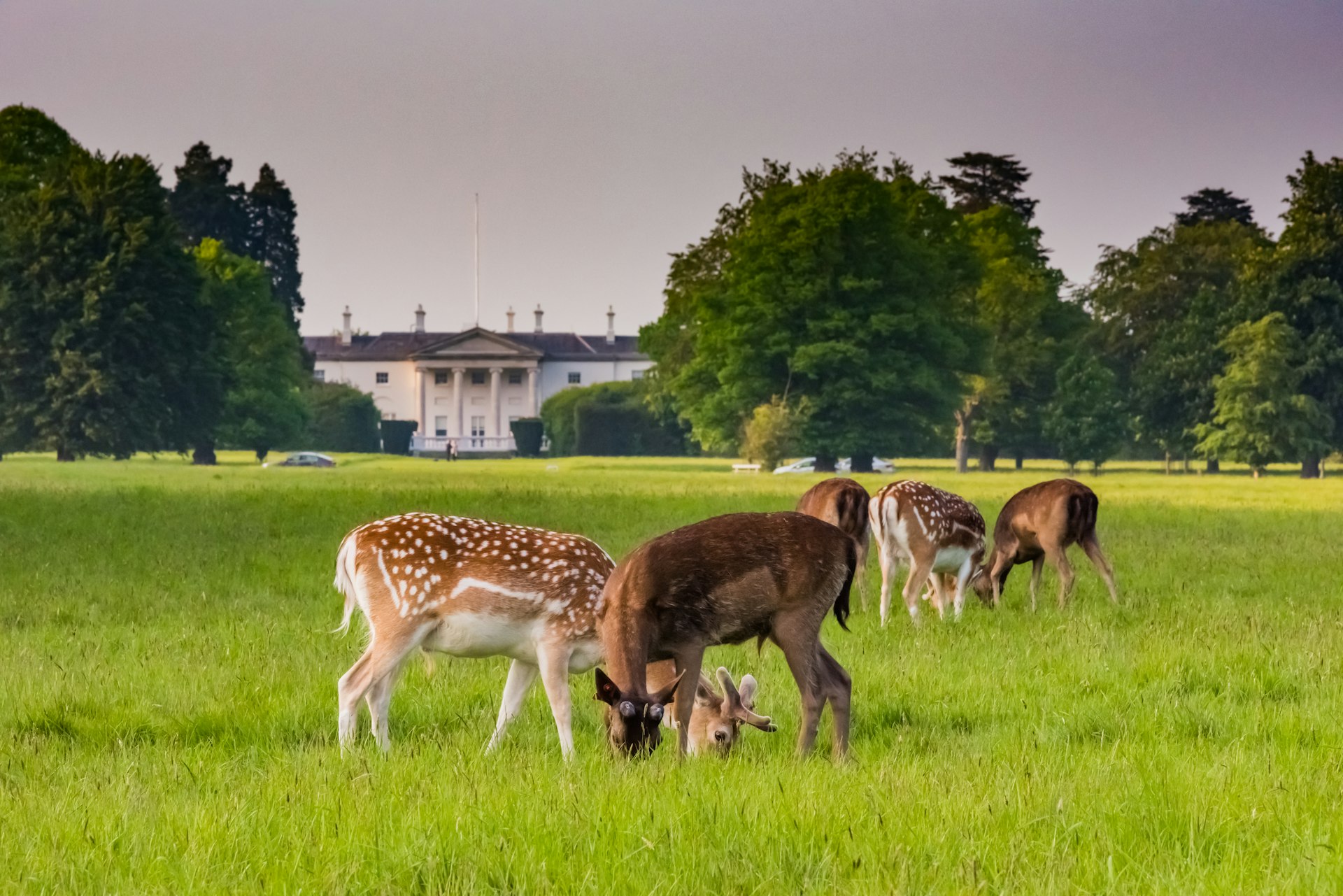
19. Chase deer in the Phoenix Park
The ultimate urban escape, the Phoenix Park is the largest enclosed city park in Europe, and gives serious bang for zero bucks. Join the walkers and joggers, cyclists and cricketers, footballers and families, all of whom come to breathe fresh air, enjoy the cultural and historic sites, spot the herds of fallow deer and catch a glimpse of the park’s most famous resident, the President of Ireland.
Planning tip: Áras an Uachtaráin, the president’s official residence, offers free guided tours on Saturdays, which need to be booked in advance.

